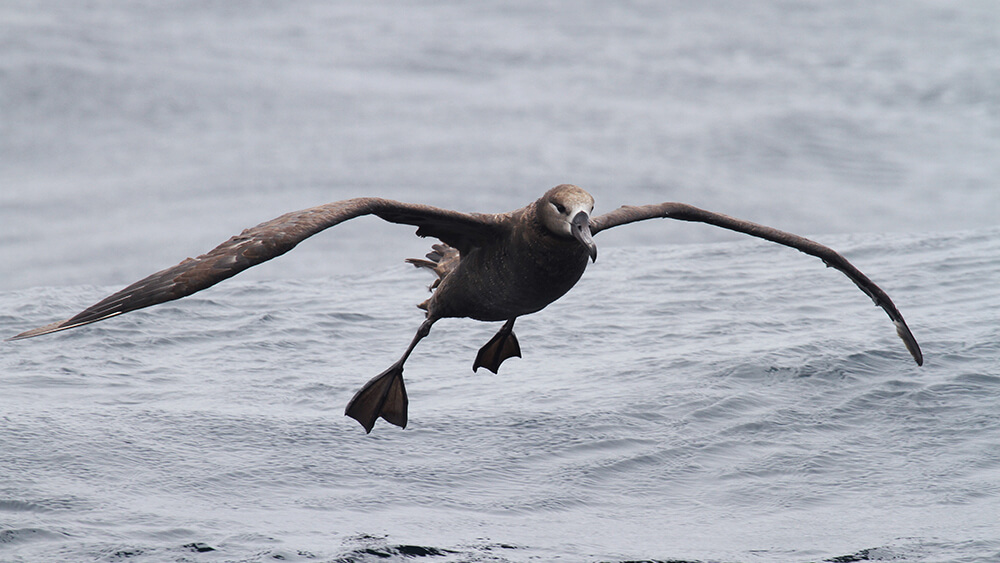Cordell Bank National Marine Sanctuary
Status and Trends of Resource Condition and Ecosystems Services 2009–2021
Executive Summary
Cordell Bank National Marine Sanctuary (CBNMS) was designated in 1989 and expanded to its current size of 1,286 square miles in 2015. The sanctuary is entirely offshore, with its southern boundary located 42 miles north of San Francisco, eastern boundary located six miles from shore, and western boundary located 30 miles from shore. Seafloor features, such as the rocky Cordell Bank, deep Bodega Canyon, steep slope, and continental shelf habitats, combined with significant upwelling ocean conditions, create an extremely productive marine environment in CBNMS, with an array of species that contribute to the sanctuary’s unique biodiversity.
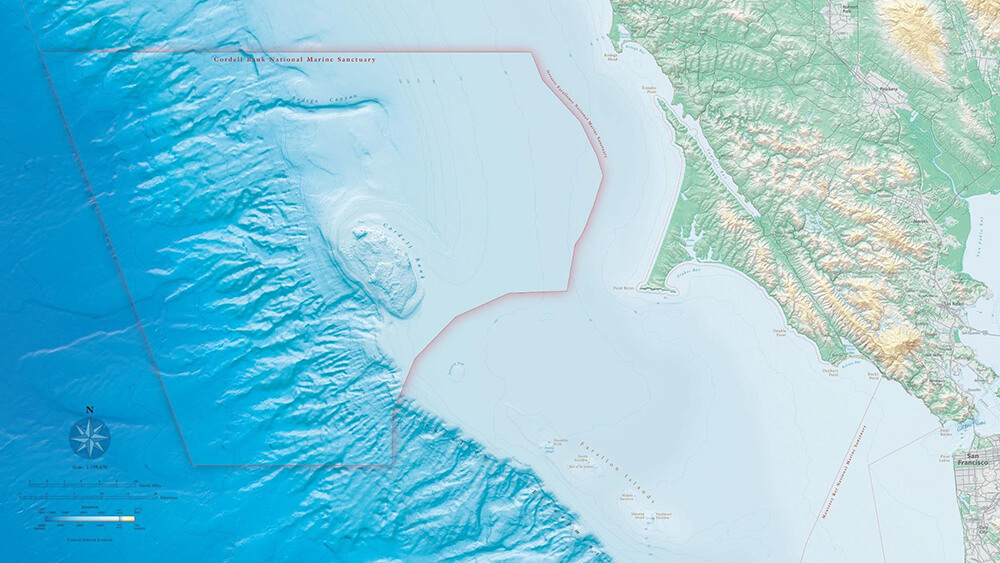
This condition report used the best available information to assess the status and trends of the sanctuary’s resources and ecosystem services. The report is structured around a Drivers-Pressures-State-Ecosystem Services-Response model. The report provides a comprehensive update of the status and trends of sanctuary resources from 2009 to 2021, covering the broad categories of water quality, habitat, living resources, and maritime heritage resources. The report also includes the first evaluation of the status and trends of ecosystem services—the ways humans derive benefits from different ecosystem attributes that they care about for their lives, lifestyles, and livelihoods.
Pressures on the Sanctuary
The primary pressures identified for CBNMS included climate change and ocean acidification, fishing, vessel activity, and marine debris. Climate change has affected all aspects of the sanctuary, including, but not limited to, water quality, species abundance and distribution, human activities, and ecosystem services. The climate-related pressures of greatest concern are ocean temperatures, upwelling patterns, ocean acidification, and deoxygenation and hypoxia. Some of the greatest challenges related to climate change include marine heatwaves, harmful algal blooms, hypoxic events, and ocean acidification.
Commercial and recreational fishing in CBNMS contribute to the local economy, support jobs, and provide food, but also impact sanctuary habitats and species through harvest, bycatch, seafloor impacts, lost gear, and wildlife entanglement.
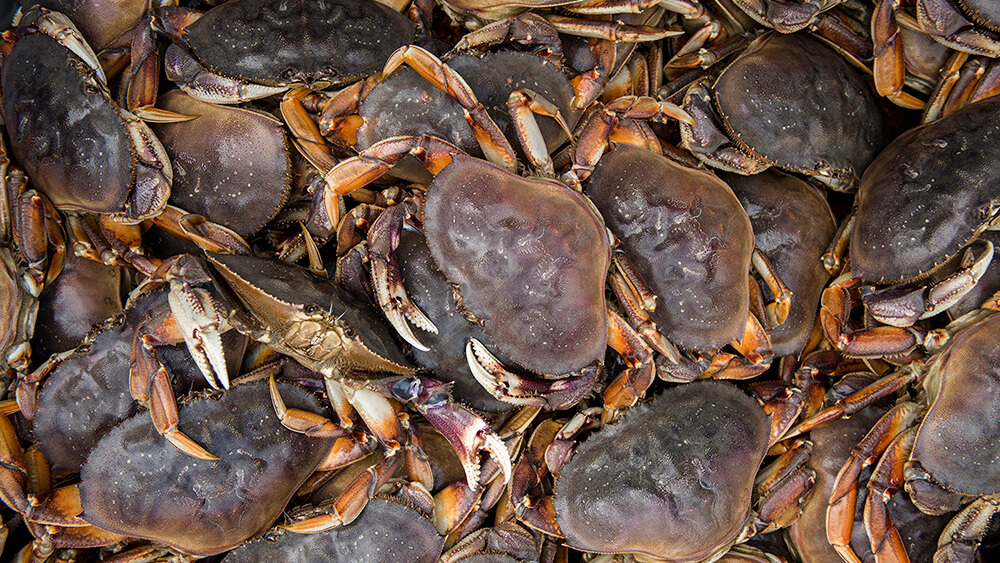
Vessel impacts include discharge of oil and sewage; wildlife disturbance, including ship strikes on whales and other species; and air and water pollution via exhaust gas emissions.
Marine debris in the ocean is a known and growing threat to marine life and biological diversity, even in remote offshore locations like CBNMS, where it has been found in all habitats. In addition to altering the structure of habitats within CBNMS, lost or discarded fishing gear can continue to catch and kill marine life for years.
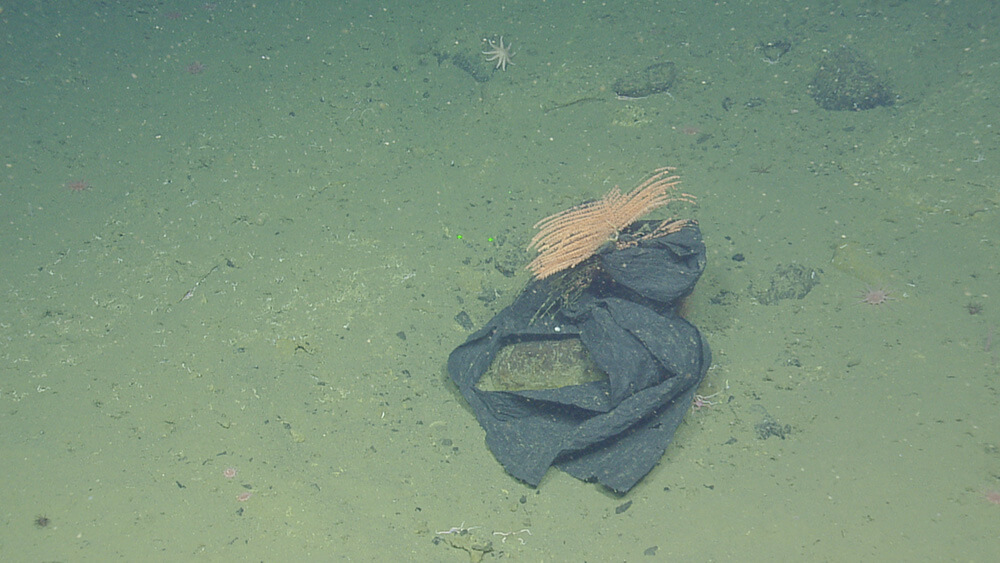
Status and Trends of Sanctuary Resources
The condition report rates the status and trends of water quality, habitat, living resources, and ecosystem services. Overall, CBNMS had good water quality throughout the assessment period, as it is not affected by some of the issues present in coastal sanctuaries, such as land-based runoff and point source pollution. For example, there was no information to suggest eutrophication has occurred in CBNMS, and water quality risks to human health, such as poor water quality affecting water access, have not been an issue.
Water Quality
Climate change has affected water quality in CBNMS. The marine heatwave from 2014–2016 resulted in unprecedented extreme conditions. In addition, during the last 10 years, the sanctuary experienced high variability between cold and warm conditions. These anomalies appear to have been more extreme and longer in duration compared to previous events. The 2014–2016 marine heatwave caused significant increases in temperature at the sea surface and at depth. However, the localized upwelling that occurs in CBNMS appeared to offer some buffering and protection from extreme temperatures in the region. Extensive harmful algal blooms during the 2014–2016 marine heatwave caused crabs and shellfish to be unsafe to eat, impacting fisheries, and there were some indications that harmful algal bloom frequency and duration may be worsening over time. The 2014–2016 marine heatwave caused habitat compression, which forces suitable habitat for forage species and their predators to be concentrated closer to shore instead of distributed over the continental shelf and shelf break. These climate impacts have had repercussions to habitat, living resources, and ecosystem services.
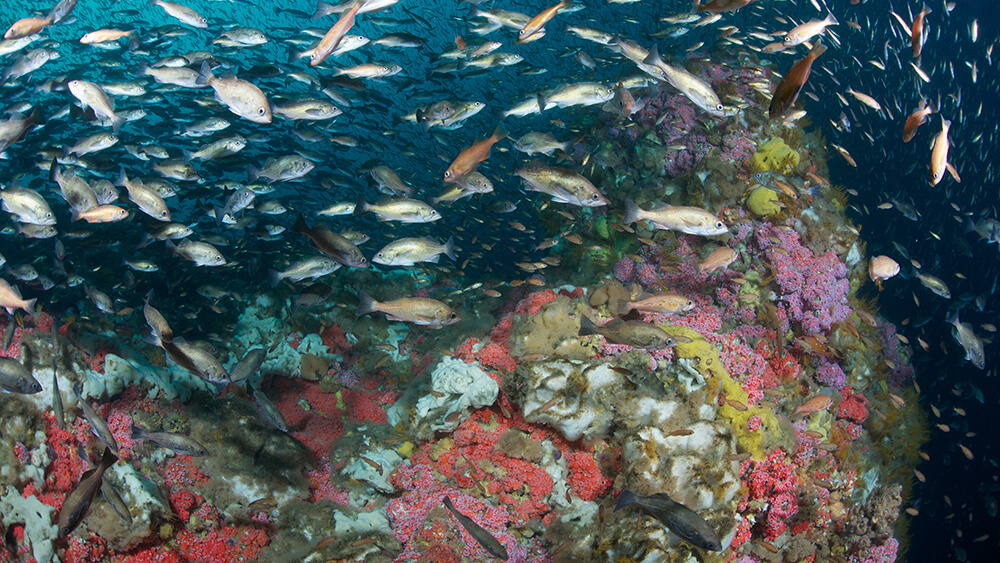
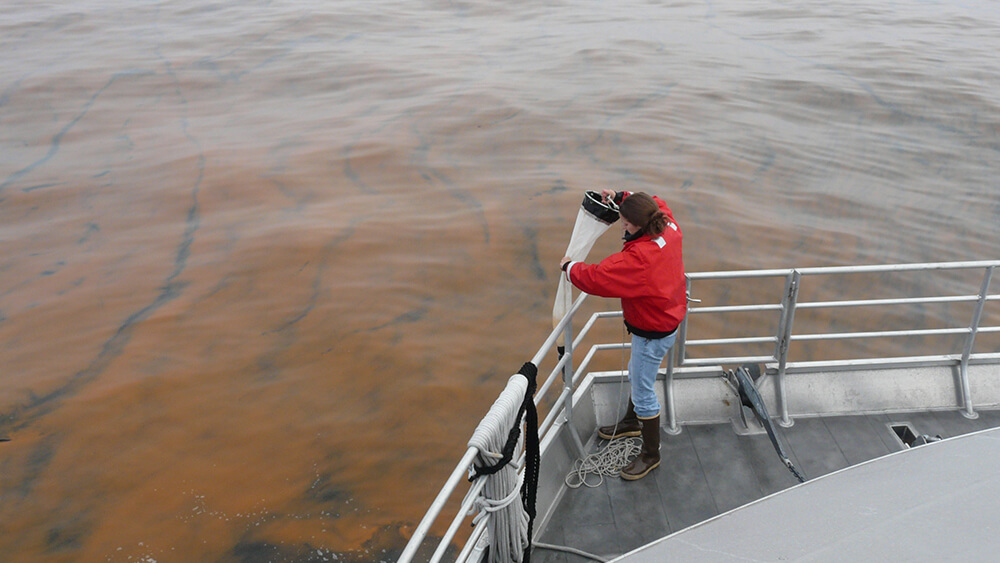
Habitat
Two major habitat types are present in CBNMS: the deep seafloor and the pelagic zone. The sanctuary's offshore location offers protection from coastal development and other direct anthropogenic disturbances to habitats. Therefore, CBNMS habitats were found to be relatively undisturbed and in good condition overall. However, climate change impacted the pelagic habitat through marine heatwaves, habitat compression, and ocean acidification. In addition, noise from ships has affected habitat quality, which can in turn affect animal behavior and health; however, more information is needed about the multi-year trend of this metric. There was also a lack of direct information on other indicators of habitat impacts. Although some inferences can be made about the effects of bottom contact fishing based on the levels and locations of fishing activity, direct information about the magnitude, extent, and duration of fishing impacts to habitat was lacking. Similarly, although contaminants in water and sediments are not expected to be a problem in CBNMS, direct information was lacking.
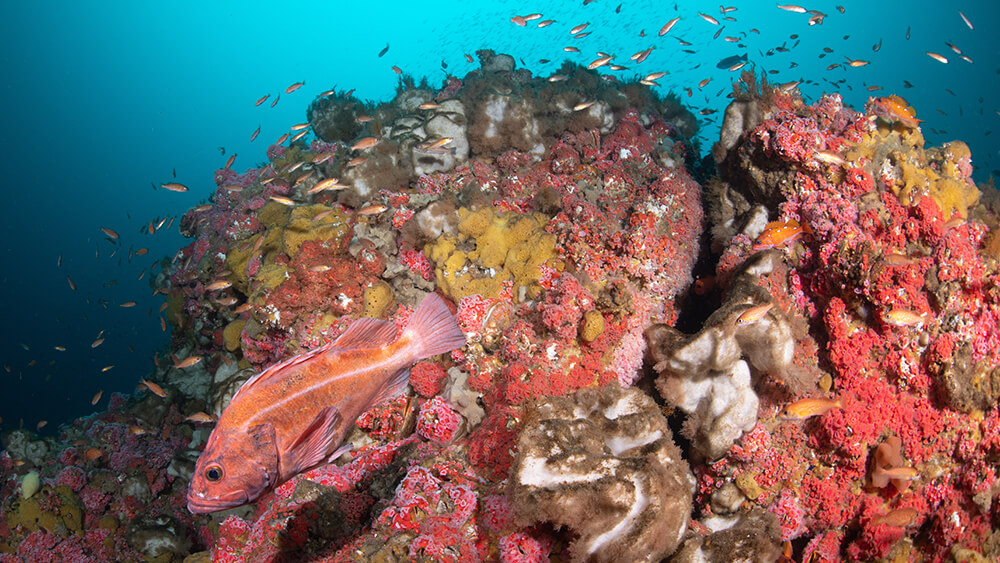
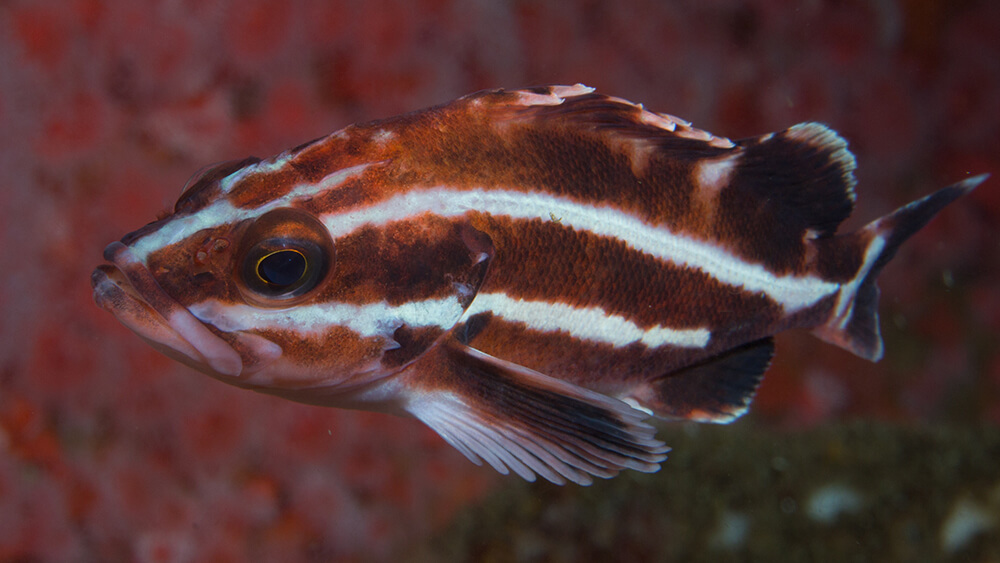
Living Resources
Living resources in CBNMS are diverse and, as such, were characterized by a range of status and trends. Abundances of some foundation species (copepods, krill, corals, and sponges) were stable, while others were variable. Changes in abundance of foundation species can change community structure and ecosystem function. Krill and copepods fluctuated during the study period in response to variations in ocean conditions. Krill density and size decreased during the 2014–2016 marine heatwave, and boreal copepods declined during the study period. Variations in copepods and krill can affect predator species. During the 2014–2016 marine heatwave, copepod species composition shifted to less nutritious species. Whales, fish, and seabirds are predators of krill and copepods, and changes in these forage species affect their distribution, health, and breeding success.
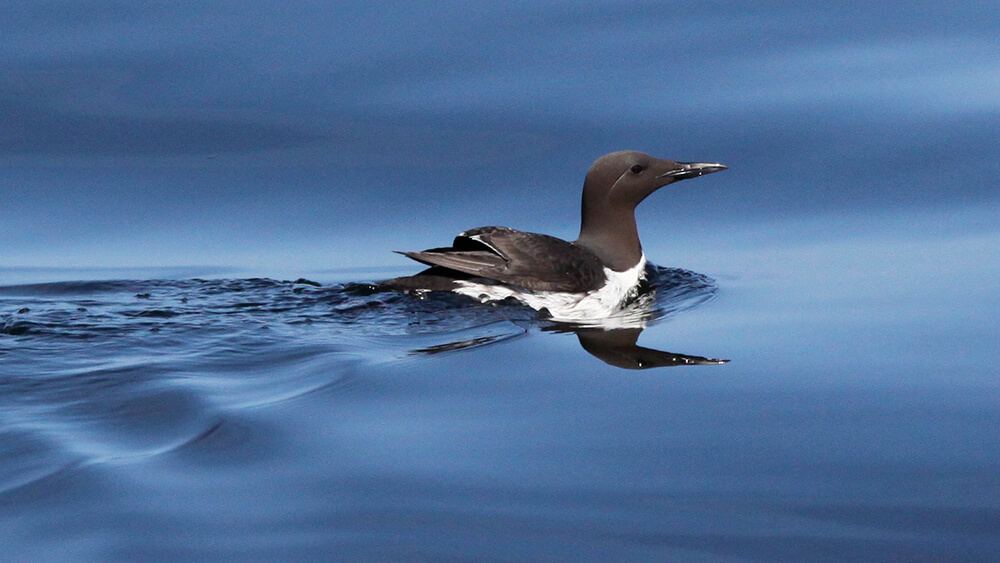
Corals and sponges on Cordell Bank appeared to have stable densities in both the shallow and deeper depth strata of the bank, based on available data and observations. In addition, the majority of corals were healthy. Some sites on Cordell Bank are monitored, but the time series is not yet long enough to determine trends, and the number of monitored sites is small.
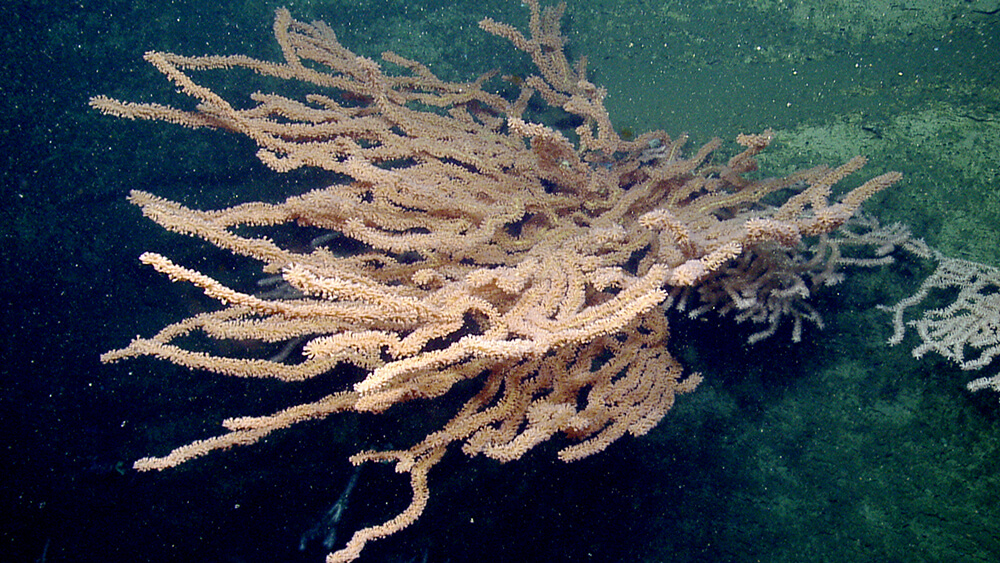
Blue and humpback whales, rockfish, seabirds, benthic invertebrates and fish, and turtles were selected as indicator focal species in the sanctuary. Whale populations on the West Coast are recovering from historic harvest, but these populations remain vulnerable. The status of blue, fin, and humpback whales is a concern because they face several threats in and around CBNMS, including ship strikes, entanglements, and climate-related changes in forage species and habitat compression. Habitat compression resulting from climate change and marine heatwaves affects forage species distribution and abundance, which subsequently increases the overlap of whales and human activities, such as shipping and fishing, making whales more vulnerable to ship strikes and entanglement.
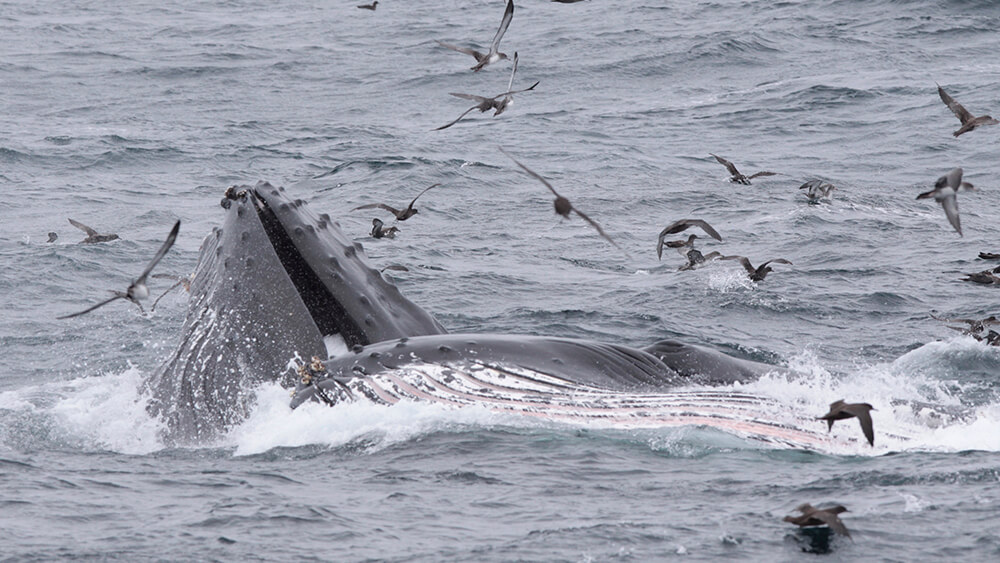
Rockfish populations have improved since the last condition report, at least in part as a result of changes in management implemented by the Pacific Fishery Management Council. However, although rockfish are at management targets, they remain far below pristine levels.
Benthic rockfish species (pygmy, rosy, squarespot, and yelloweye rockfish) on Cordell Bank appeared to be abundant and stable throughout the assessment period. Similarly, on the soft sediment on the shelf, flat fish and sea pens were abundant and stable compared to past surveys, although a longer time series is needed to assess trends in both habitats.
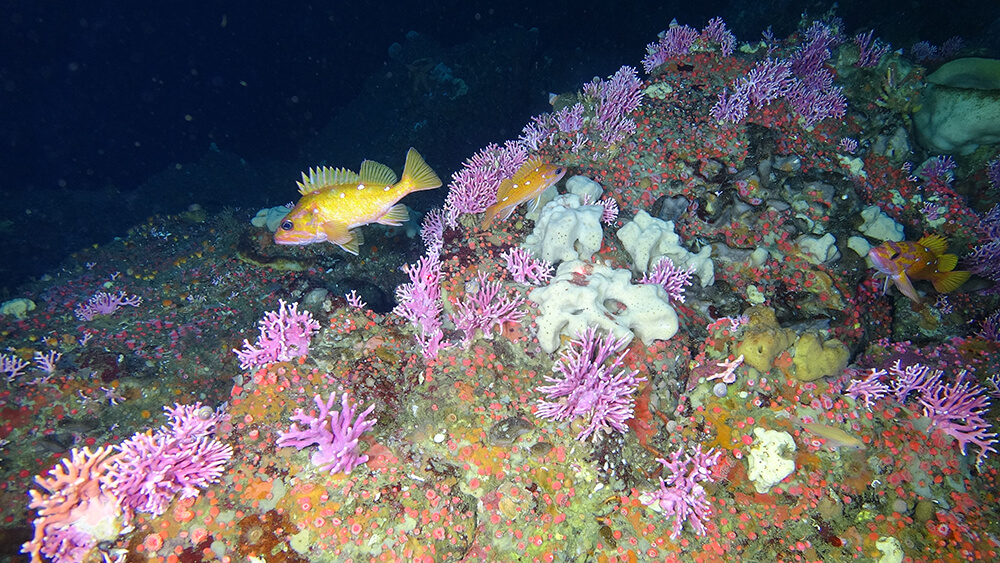
One notable population decrease occurred in leatherback sea turtles, which have experienced a dramatic decline on the West Coast since 1990. Leatherback sea turtles forage in and migrate through CBNMS and other California national marine sanctuaries. They are vulnerable to a variety of threats throughout their lives including entanglement, bycatch, poaching, and habitat degradation.
There have been some records of non-indigenous species, but no indication that these were detrimental or outcompeting other species. Non-indigenous species are tracked during surveys in benthic and pelagic ecosystems.
Biodiversity in CBNMS appeared to be good and relatively stable based on groundfish, benthic invertebrates, and seabird communities in the sanctuary. This was an improvement from the previous condition report based largely on the recovery of rockfish populations along the West Coast, including in CBNMS. Deep-sea expeditions in 2017–2019 expanded the list of known species within the sanctuary, and further study is likely to increase knowledge of deep-sea biodiversity. In addition, range expansions and shifts in species distribution as a result of changing ocean conditions may contribute to changes in biodiversity.
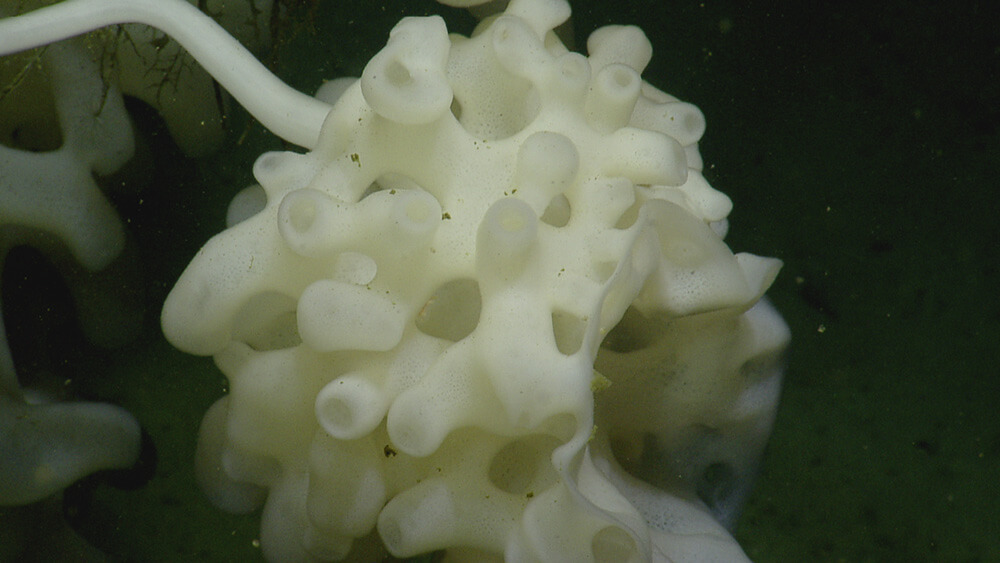
Status and Trends of Ecosystem Services
Ecosystem services evaluated in the report included heritage, commercial harvest, consumptive and non-consumptive recreation, education, sense of place and science. The heritage of CBNMS includes commercial and recreational fishing, science and exploration, and the presence of maritime heritage resources (archaeological, cultural, historical properties). There is one suspected shipwreck within the sanctuary, and there is limited information on other cultural resources. The Navy destroyer, USS Stewart, has not been specifically located or assessed since it was intentionally sunk in 1946 within what is now the sanctuary. It is assumed that the ship will have deteriorated to some degree due to being submerged in the Pacific Ocean. Regardless of the current condition of the shipwreck, it likely continues to retain cultural and historical significance and educational value. At this time, the sanctuary is unaware of other maritime heritage resources or information that suggests historical connections of Indigenous peoples to CBNMS specifically.
Consumptive harvest and consumptive recreation are ecosystem services to which CBNMS contributes, and are part of the sanctuary’s heritage. Dungeness crab, salmon, and groundfish are commonly targeted. Recent changes in ocean temperature and extensive harmful algal blooms, which impacted fisheries, as well as fishery delays and closures, such as the ones to mitigate harmful algal bloom exposure and entanglement risk, have somewhat compromised the capacity of the sanctuary to provide these ecosystem services.
CBNMS is a challenging place to visit. A limited number of businesses provide trips to the sanctuary; therefore, very few people are able to access it. Demand to visit the sanctuary is supported by the abundance and variety of wildlife that the sanctuary supports, such as baleen whales and pelagic seabirds. Many of those who have experienced the sanctuary have developed strong, lasting connections. For those who cannot travel to the sanctuary, CBNMS staff and partners have worked to bring the sanctuary to people through media such as telepresence and photo exhibits. Improved imagery, exhibits, and technology such as telepresence opportunities have increased the quality of connections to the public. Staff have also worked with students and teachers through professional development training on specific ocean topics. However, CBNMS was unable to fully expand opportunities to the full potential with just one federal employee dedicated to education.
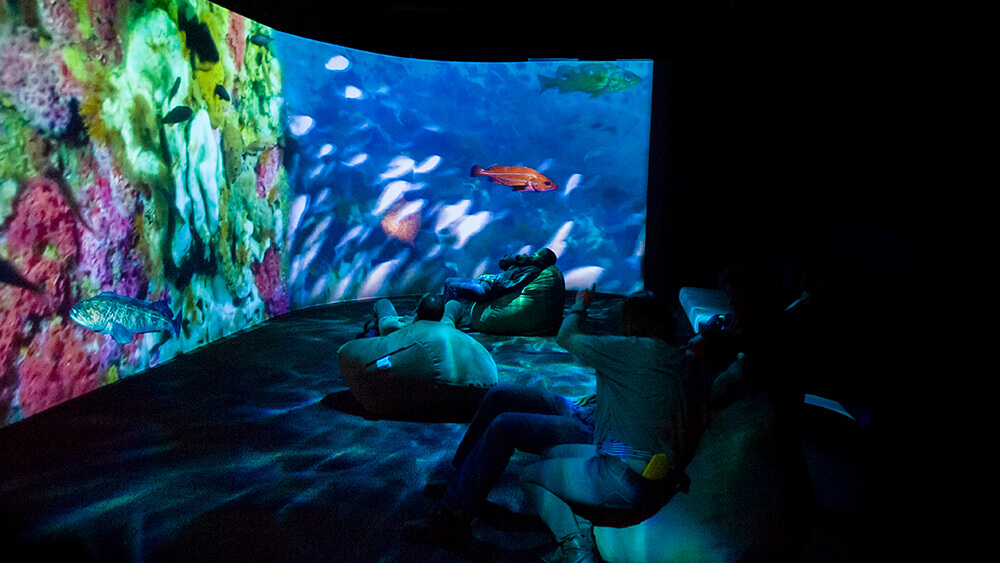
CBNMS has a strong science program, but the ecosystem service of science has been limited by the difficulty of accessing the sanctuary. Compared to other sanctuaries with a shoreline, accessing the sanctuary to conduct research presents challenges such as remoteness, rough weather, limited number of research vessels, a limited number of research institutions nearby, and a small science staff. The trend of this service was determined to be improving based on the sanctuary expansion, which spurred new research interest and expanded the area for research.
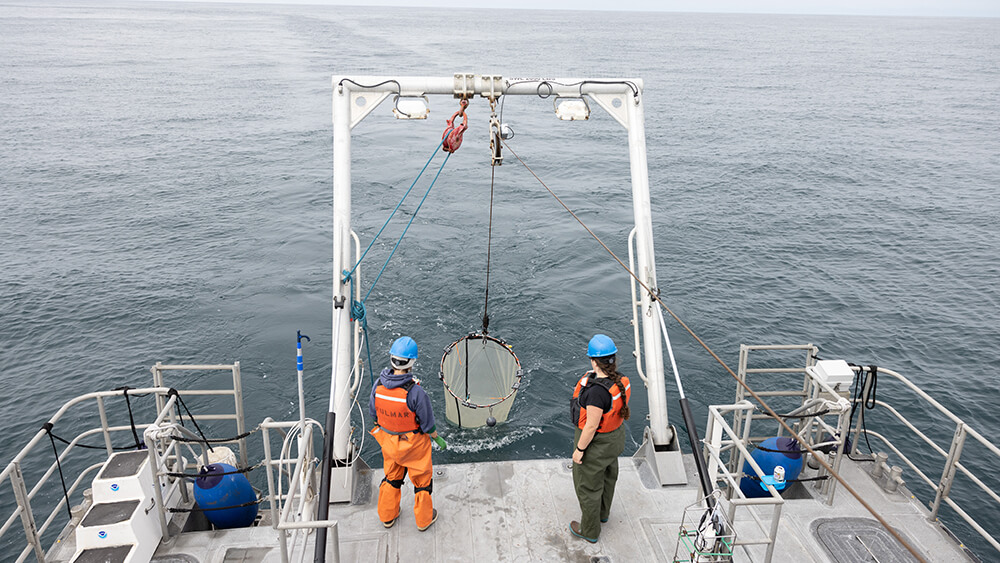
Response to Pressures
Significant responses to the pressures since the last condition report included investigations of changing ocean conditions, such as a climate change vulnerability assessment and a report on climate change impacts on sanctuary species and habitats. Targeted research and monitoring projects documented conditions and impacts, and the data informed management, including Pacific Fishery Management Council fishery management plans and CBNMS efforts to reduce ship strikes to whales. CBNMS’ soundscape research identified the presence of whales year round within the sanctuary and established an acoustic baseline. Through targeted education, CBNMS staff has expanded awareness about the sanctuary among students and teachers, as well as within the larger Sonoma and Marin community. This report identifies gaps in current monitoring efforts, as well as pressures that may require monitoring and remediation through management actions in the coming years. The information in this report will inform the next CBNMS management plan to ensure the sanctuary continues to thrive.
